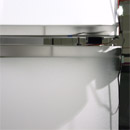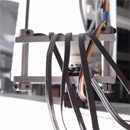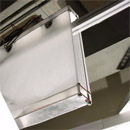 |
Download PDF:
High
Res (42MB)
Low
Res (8MB)
You will need the
latest Acrobat Reader
to view this document.
|
|
On August 1, 2001 I completed my Masters Thesis, a 134 page document
which provides a context and theory for Behavioral Kinetic Sculpture.
This thesis was completed within the Aesthetics and Computation Group
at the Massachusetts Institute of Technology.
Abstract
As we enter the 21st century, our culture has been significantly changed
by the arrival of the internet and the proliferation of personal computing
and digital communications. As the decades progress, we will find ourselves
interacting with machines more and more frequently, but what will be the
qualities of these interactions? Through integrating information processing
technologies into kinetic sculpture we are able to explore new methods
and properties of interaction. The concepts and experiments presented
in this thesis as behavioral kinetic sculpture are the intellectual progeny
of cybernetic art as evolved over the last thirty years through the development
of interactive software, behavioral robotics, artificial life, and modern
sculpture. This thesis defines the concept of behavioral kinetic sculpture
as a unique category of expression through providing context, terminology,
and a conceptual structure for its discussion and evaluation. This is
supported through discussing the authorís experiments in interaction and
the behavioral kinetic sculpture, Trundle.
Thesis Advisor: John Maeda
Thesis Readers: Michael Joaquin Grey, Bruce Blumberg
|
|


